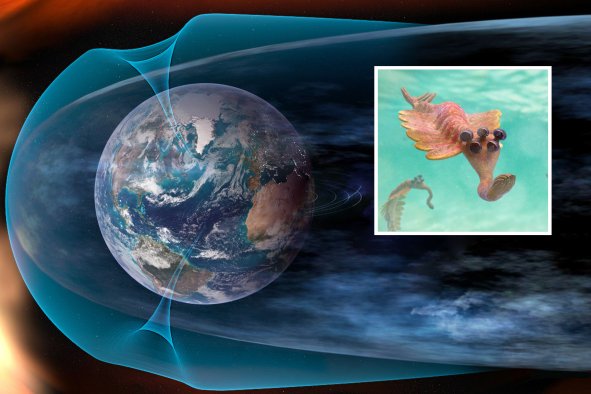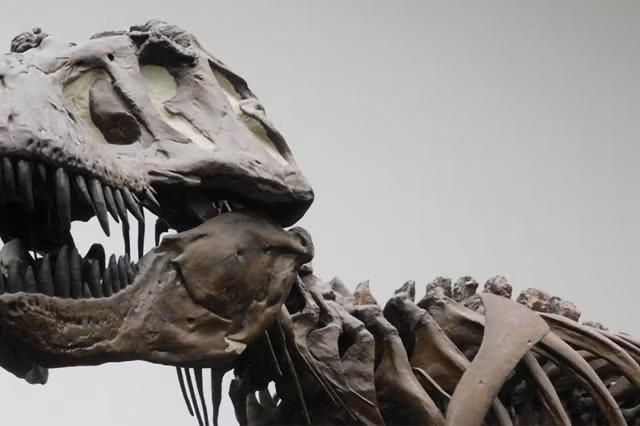Hopeful stargazers are in for a treat this week as the annual Eta Aquarid meteor shower is primed to light up the night sky.
This meteor shower runs between mid-April to late May, and is due to peak in the early hours of May 5 and May 6, with as many as 60 shooting stars per hour being expected this year.
Thanks to the new moon being due on May 8, the glare of the moon will be almost entirely absent for the meteor shower, meaning that viewing conditions will be ideal.
In fact, researchers studying the patterns of the Eta Aquarids over recent decades have found that this year's shower might exhibit substantially higher activity, suggesting that the 2024 Eta Aquarid meteor shower could be the most intense of the entire 21st century.
"The extension of our model to future years predicts ... four significant η-Aquariid outbursts in 2023, 2024, 2045 and 2046," a 2020 paper in the journal Astronomy and Astrophysics said.
The Eta Aquarids, so-named because the shower's radiant—the point in the sky where the meteors appear to come from—is near the star Eta Aquarii in the constellation Aquarius, is one of the many meteor showers that the Earth experiences every year.
The meteors of the Eta Aquarid shower are known for their speed, traveling at about 44 miles per second. They often leave glowing trails of ionized gas that last for a few seconds, and sometimes produce bright fireballs.
What Are the Eta Aquarids?
The meteors are caused by particles left behind by a comet on its orbit around the sun. As a comet gets closer to our star, its surface heats up, causing chunks of ice, dust and debris to fall off in its wake. This trail of debris forms a band of dust in the path of the comet, which triggers a meteor shower as the Earth passes through this area of space every year. The particles causing this shower come from Halley's Comet, also known as Comet 1P/Halley, a well-known comet that orbits the Sun approximately every 76 years. This same comet is also responsible for the Orionid shower in October.
"In general, most comets shed bits of dust and small grains of dirt, particularly as they pass close to the Sun on their orbits around the solar system. That dust and grains follow (largely) the same orbit of the comet itself so in most cases, they are easy to spot and predictable when Earth passes through that debris," Brad Gibson, director of the E.A. Milne Centre for Astrophysics at the University of Hull in the U.K., told Newsweek. "The annual Eta Aquarids shower is due to Earth passing through the debris tail of Halley's Comet."
Halley's Comet—which measures around 10 miles across—last passed close to Earth and the inner solar system in 1986, and won't swing by again until 2061. It orbits the Sun in a highly elliptical orbit, taking about 76 years to complete one trip.
This famous comet has been observed since at least 240 BC, but it was Edmond Halley who first predicted its periodic return in 1705. He noted that the comets observed in 1531, 1607, and 1682 were so similar in their characteristics and orbit that they must be the same object. Halley predicted it would return in 1758, and his prediction was confirmed.
How To Watch the Eta Aquarids
The Eta Aquarids are best viewed from the Southern Hemisphere, where observers can see up to 30-40 meteors per hour under ideal conditions. In the Northern Hemisphere, however, the rates can be lower, about 10-30 meteors per hour, due to the radiant's lower position in the sky. Eta Aquarid meteors are often seen as "Earthgrazers" from the Northern Hemisphere, which are long meteors that seem to graze the Earth's horizon.
To watch the Eta Aquarids, NASA advises choosing a location far from urban and street lighting and lying down with your feet pointing east. After spending around 30 minutes in the dark, your eyes will adjust, making it easier to spot meteors.
Do you have a tip on a science story that Newsweek should be covering? Do you have a question about meteor showers? Let us know via science@newsweek.com.
Disclaimer: The copyright of this article belongs to the original author. Reposting this article is solely for the purpose of information dissemination and does not constitute any investment advice. If there is any infringement, please contact us immediately. We will make corrections or deletions as necessary. Thank you.



